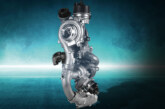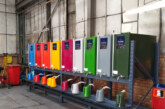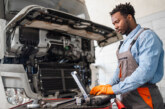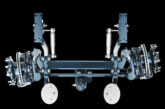The best way to keep on track with tyre health
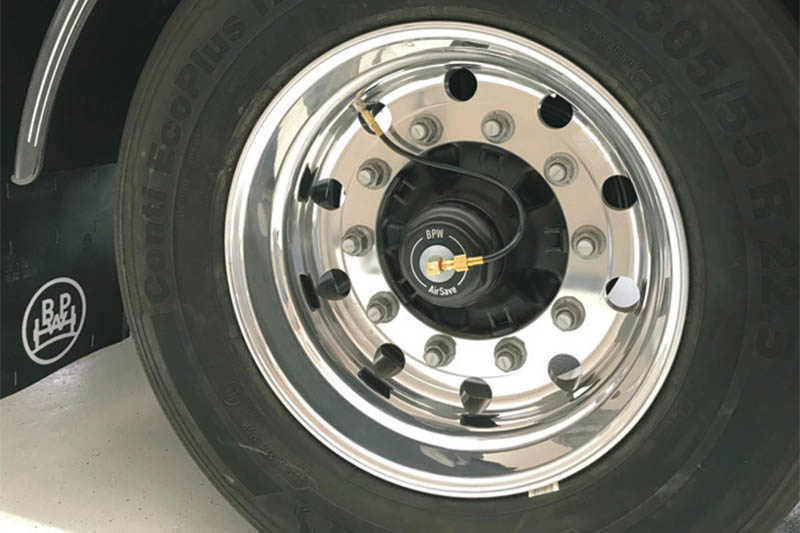
Want to know the best way to keep on track of tyre health in your fleets? BPW is here to explain the difference between its tyre pressure management systems.
With an ADAC-reported figure of over 65 per cent of truck breakdowns caused by tyre punctures, tyre health is vital to the efficiency of commercial fleet operations. Factors like road conditions, load weights, and varying temperatures can lead to pressure variations, which increase fuel consumption, excessive tyre wear, and unexpected downtime. In the commercial vehicle industry, investing in a tyre pressure management system can help reduce operating costs and deliver long-term savings.
BPW understand the challenges fleet operators face and offers two solutions: tyre pressure monitoring system (TPMS) and BPW AirSave (tyre pressure refill system, TPRS). Both are tyre pressure management systems, however, they operate differently. Understanding how each system works is key and can help operators decide which system to use.
TPMS
TPMS provides the user with real-time insights into a vehicle’s tyre pressure and temperature. Compliant with ECE 141 regulations, the system transmits tyre pressure deviations directly to the truck via the electronic braking system (EBS), allowing drivers to receive immediate alerts and minimise the risk of costly issues such as tyre blowouts. Designed to fit most wheel sizes and with a lifespan of up to seven years, the system provides lasting value and reliability.
By linking TPMS data with BPW idem telematics, users can also transmit tyre information to a control centre for further processing. The system’s smart TPMS functionality enables email notifications to be sent to fleet managers or tyre service providers. Additionally, classic telematics features such as alarms, reports, and maintenance calendars enhance fleet management efficiency and reliability.
BPW idem telematics gateway basic can support up to 24 individual tyre sensors, which can be mounted on either the wheel rim or the tyre valve. These sensors transmit tyre pressure data to a receiver unit with an accuracy of up to +/- 0.3 bar. BPW TPMS can be scaled up further to include 48 sensors with the gateway pro option.
AirSave
Progressing from TPMS, AirSave goes a step further by not only continuously monitoring tyre pressure but also regulating it through an integrated inflation system. Using the trailer’s existing pneumatics, AirSave employs an automatic booster pump to maintain the pre-set tyre pressure. The air is then directed through the axle beam to the wheel end tyre valve. In the event of pressure deviation, AirSave activates at just +/- 0.2 bar, offering greater reliability compared to standard systems.
In the event of a permanent pressure loss, BPW AirSave alerts the driver with a constant, visible warning light in the cab, indicating that a drop in tyre pressure has been detected, and the vehicle must stop when it is safe to do so.
Maintaining optimal tyre pressure is crucial not only for safety but also for fuel efficiency and emissions reduction. According to BPW, by regulating tyre pressure AirSave can save 250 litres of fuel, equating to 655 kilograms in CO2 emissions per year, (based on a tri-axle trailer with a mileage of 120,000 kilometres per annum).
Digital connectivity
Both TPMS and AirSave are designed to detect potential tyre failures before they escalate, allowing operators to address potential braking problems long before scheduled maintenance. With the integrated Cargofleet 3 telematics platform or the Driver App, drivers and fleet operators can gain valuable real-time data and insights from anywhere. This digital connectivity aims to improve informed decision-making, enhancing fleet management efficiency and helping to prevent costly downtime.
So, which is best for you?
Choosing between TPMS and AirSave will depend on fleet priorities. TPMS provides real-time data and allows for proactive action. AirSave is a fully automated system that continuously adjusts tyre pressure, making it ideal for fleets focused on minimising unplanned disruptions and breakdowns. Both systems offer benefits such as reduced tyre wear, improved fuel efficiency, and enhanced safety.


